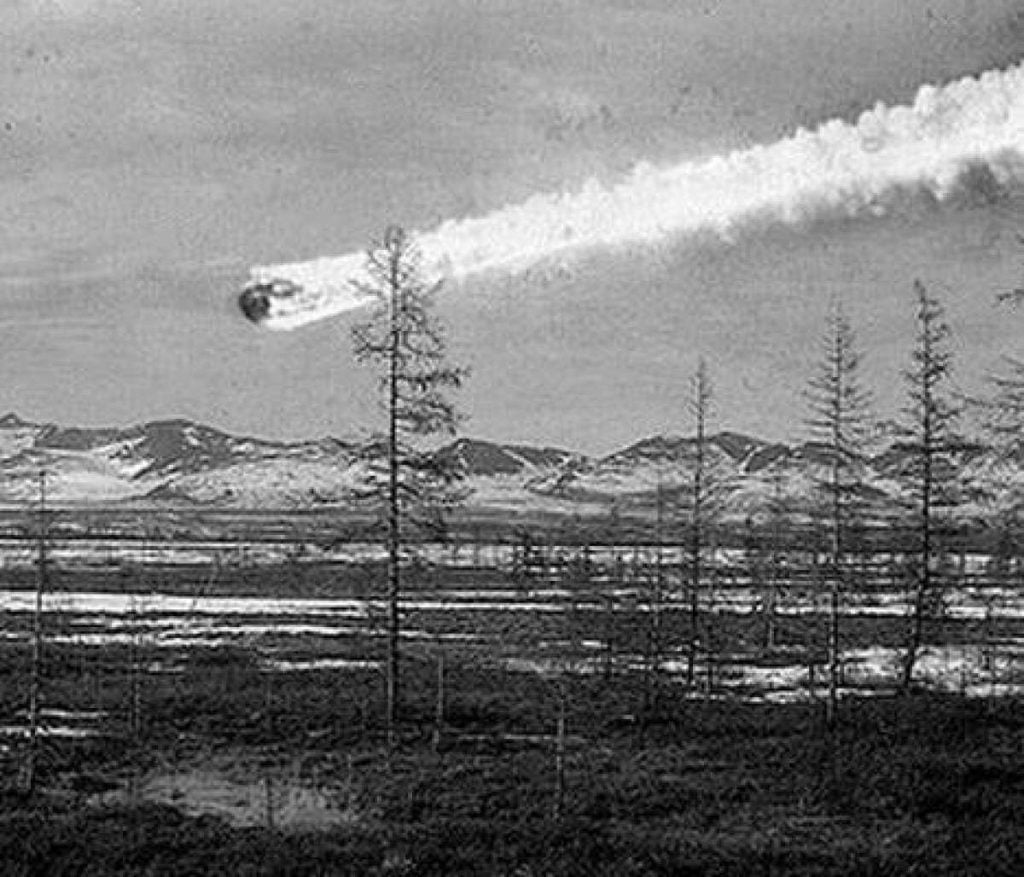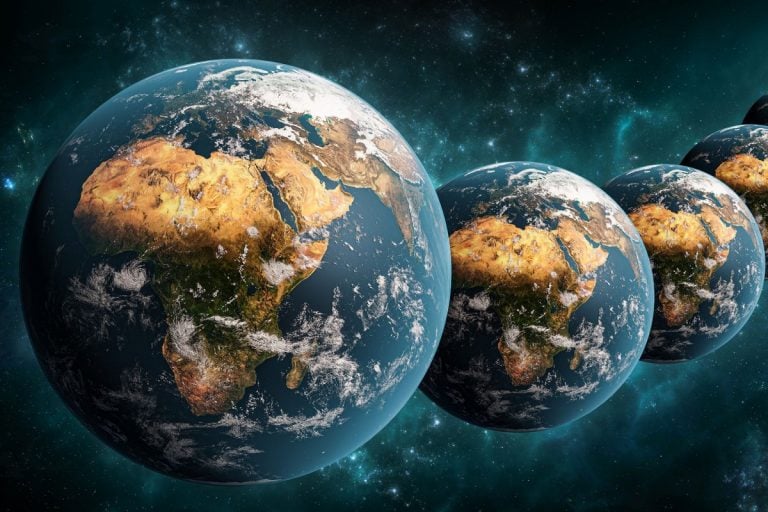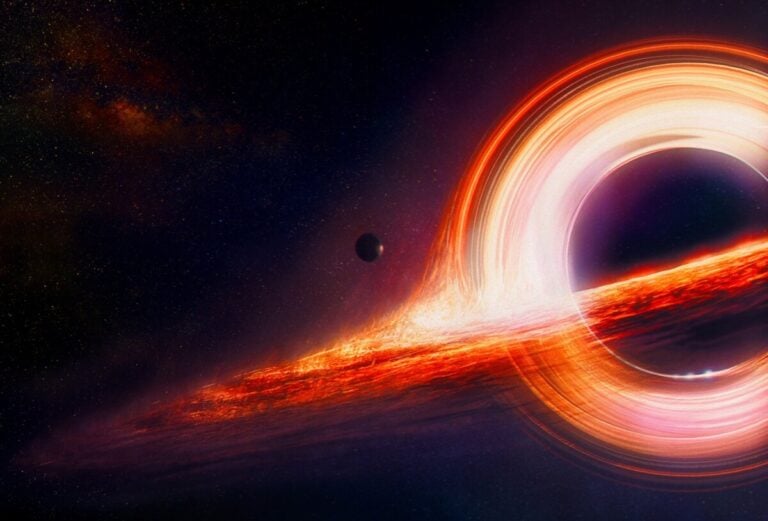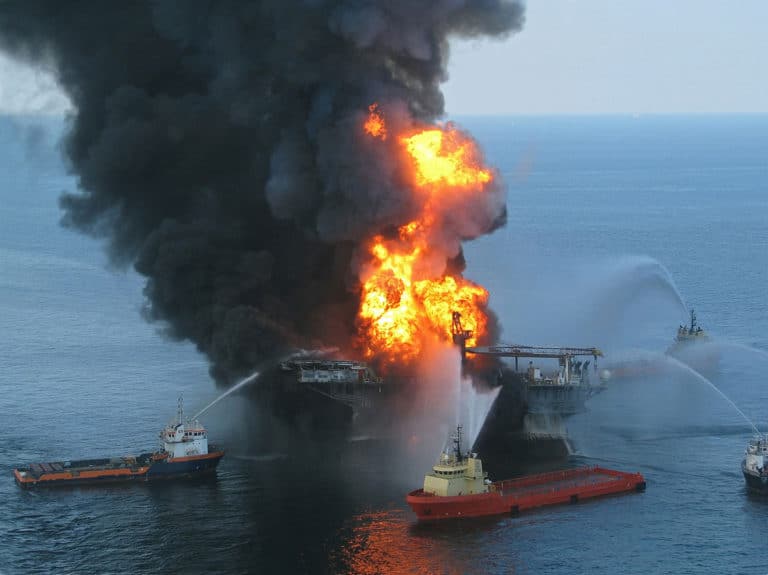For more than 110 years, one of the most mysterious phenomena occurred on the territory of Siberia – the fall of the Tunguska meteorite.
- Brief history of the phenomenon
- Only a trace remains!
- The estimated coordinates of the central point of the explosion of the Tunguska meteorite
- Sequence of events associated with the fall of a meteorite
- The very first written messages about the fall of a meteorite
- Expedition led by L.A. Kulikom
- Various hypotheses about this phenomenon
- Mention of a phenomenon in culture
This event still causes a lot of discussion. There are many speculations floating around the phenomenon. Some versions are often fantastical in nature. The event was overgrown with secrets and riddles that humanity still cannot solve.
Brief history of the phenomenon
It is reliably known in what year the Tunguska meteorite fell to Earth. The event took place on June 30, 1908. The time of the fall of the space object is also known.
This happened at approximately 07:00 local time. A fiery spherical body was observed by eyewitnesses in the territory of what is now the Krasnoyarsk Territory of Russia in the area of the river called Podkamennaya Tunguska. It was established that the space object was flying in a northwest direction. Presumably the size of the Tunguska meteorite reached 30 meters.
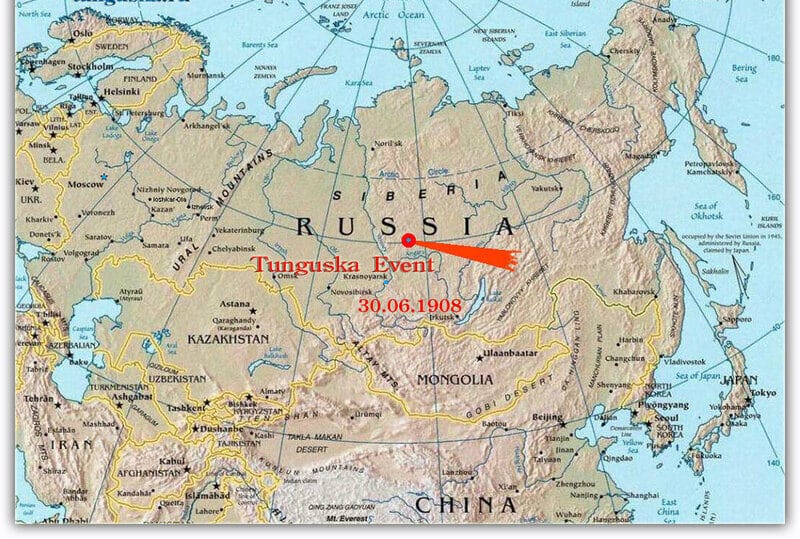
The celestial body did not reach the earth. Its explosion occurred at an altitude of 7 to 10 km above the taiga. Fortunately, there were no populated areas above the explosion site. The resulting shock wave was so strong that observatories around the world could record it. Even in the Western Hemisphere they learned about this phenomenon.
The explosion led to the fall of trees across a vast area of the taiga. Its area exceeded 2 thousand km2. Many houses were damaged due to the explosion. The windows of many of them were broken. Moreover, this was observed in populated areas located at a distance of over 180 km from the center of the explosion.
All publications in the world reported on the meteorite, but the first scientific expedition to the site of its fall was organized only 19 years later. The first study of the area where the celestial body supposedly fell was carried out by Soviet specialist L.A. Sandpiper. The expedition was organized by him in 1927. In subsequent years, other expeditions were sent to the site of the meteorite fall. One of them was organized in 1978 by geologist Nikolai Kovalykh.
Only a trace remains!
Interesting to note! No fragments or remains of the meteorite were found! In 1965, American scientists Cowan and Libby hypothesized that the Tunguska meteorite consisted of antimatter and upon contact with the matter of the earth’s atmosphere, annihilation occurred, that is, matter and antimatter, having combined together, turned into energy, leaving no fragments. Many scientists tried to find them, but everything settled on the theory that they evaporated during the explosion, and some flew several thousand kilometers and are now impossible to find.
However, there are many other meteorites and fragments that did not burn up in the atmosphere or did not evaporate during the explosion, so this outcome of the explosion events after the Tunguska meteorite becomes mysterious and gives rise to speculation about its origin (theories of origin are described below).
What a meteorite looks like. Example
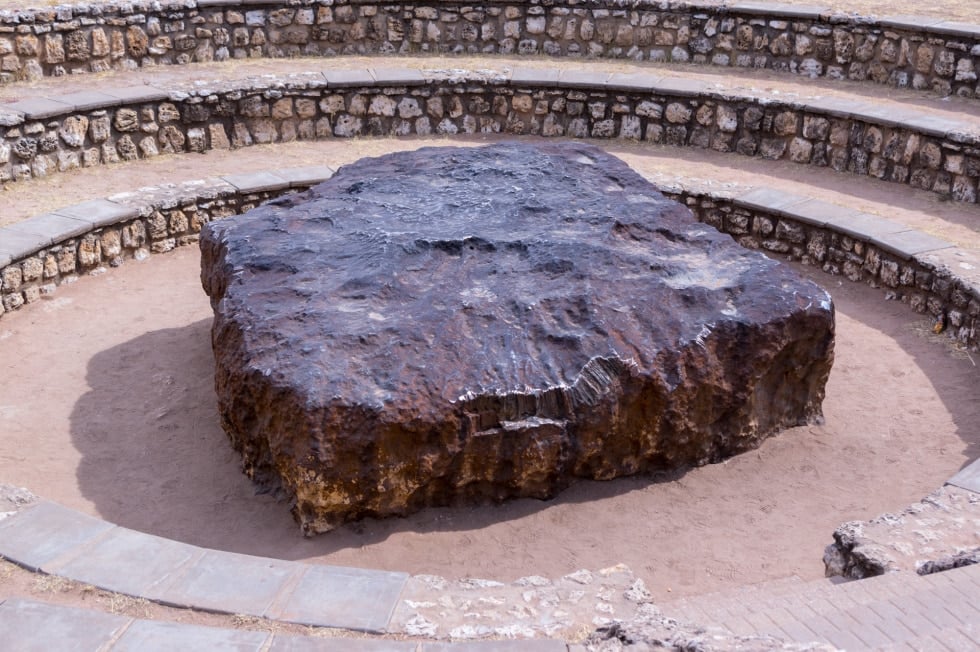
The Goba iron meteorite, weighing about 66 tons and with a volume of 9 m³, fell in prehistoric times and was found in Namibia in 1920 near Grootfontein. This is the largest meteorite found. It is preserved at a crash site in southwest Africa, Namibia, near Goba West Farm. It is also the largest piece of naturally occurring iron on Earth.
The estimated coordinates of the central point of the explosion of the Tunguska meteorite
Researchers were unable to accurately determine the height at which the space object exploded. Various estimates range from 5 to 15 km. The diameter of the Tunguska meteorite was approximately 30 meters. Scientists agree that the explosion of the celestial body was not a point explosion. Because of this, researchers give different coordinates for the epicenter of its explosion.
Kulik L.A. and Astapovich I.S. It was established that the epicenter of the explosion of the Tunguska meteorite corresponds to the coordinates 60°54″07’N and 101°55″40’E. d. Currently, the location of the fall of the Tunguska meteorite on satellite maps is also more often indicated as the territory to which the coordinates proposed by Kulik and Astapovich correspond. Other researchers designated the zone above the taiga, located south of the one called Kulik and Astapovich, as the epicenter.
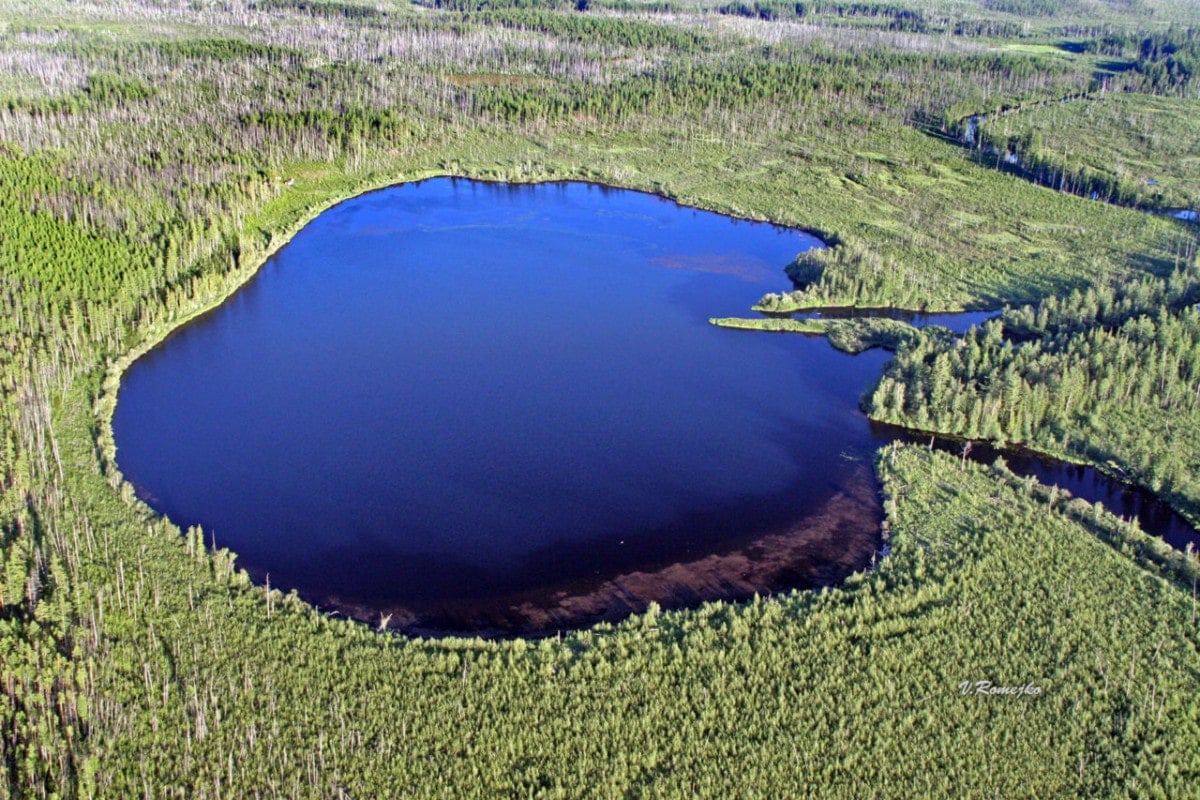
The approximate place where the Tunguska meteorite fell is called the area of the Podkamennaya Tunguska River. It is assumed that the explosion of the facility occurred near the village of Vanavara, which is now located in the Evenki district of the Krasnoyarsk Territory. The fall of the body occurred approximately 60 km north of the specified settlement.
Sequence of events associated with the fall of a meteorite
This event was preceded by unusual phenomena observed in the atmosphere. Three days before the meteorite fell, residents in Western Siberia, as well as in the European part of the Russian Empire, observed particularly bright twilight. Noctilucent clouds became a rare phenomenon of those days. A phenomenon called a solar halo was also observed.
At approximately 7 a.m. on June 30, 1908, a celestial body appeared over central Siberia. It was moving in a northerly direction. The flight of the object was observed by many inhabitants of nearby settlements. The fall of the meteorite was accompanied by sounds reminiscent of thunder.
Eyewitnesses named the approximate time when the Tunguska meteorite fell. This happened at approximately 07:14 am local time. At this time, the inhabitants of the area heard a strong explosion. It occurred near Podkamennaya Tunguska above the Southern Swamp. This is indicated by the research of Kulik’s expedition, the results of which are described in the works of V.V. Rubtsova and A.I. Voitsekhovsky.
The power of the explosion that accompanied the fall of the Tunguska meteorite is comparable to the power of the explosion of the Soviet hydrogen bomb tested in 1961. In the first case, the estimated power was about 50 megatons, in the second – over 58 megatons.
Eyewitnesses about the fall of a celestial body
This phenomenon was observed by residents of settlements located within 100 km from its epicenter. The most complete information about the event was given by the Evenki brothers under the names Chekarena and Chuchanchi. Their tent was located only 30 km from the place where the Tunguska meteorite fell.
The brothers said that at the time the object fell, they were in a tent near the Avarkitta River. Eyewitnesses first heard a whistle. They also noted a sudden increase in wind, followed by the first strong thunder. Then the tent of eyewitnesses was knocked down by a strong wind. The brothers also spoke about an earthquake and a strong fire that broke out in the forest. At the end, eyewitnesses saw a bright ball in the sky, similar to a second sun. Then the thunder rang out again. These memoirs are contained in a collection of articles published in 1967 under the authorship of I.M. Suslova.
Consequences of the phenomenon that occurred
The meteorite impact led to a large-scale forest fall. Trees were destroyed on a total area exceeding 2 thousand km2. The explosion from the fall of the celestial body was heard by people living 850 km from the epicenter. In some residential buildings within a radius of 150 km, glass was broken by the blast wave.
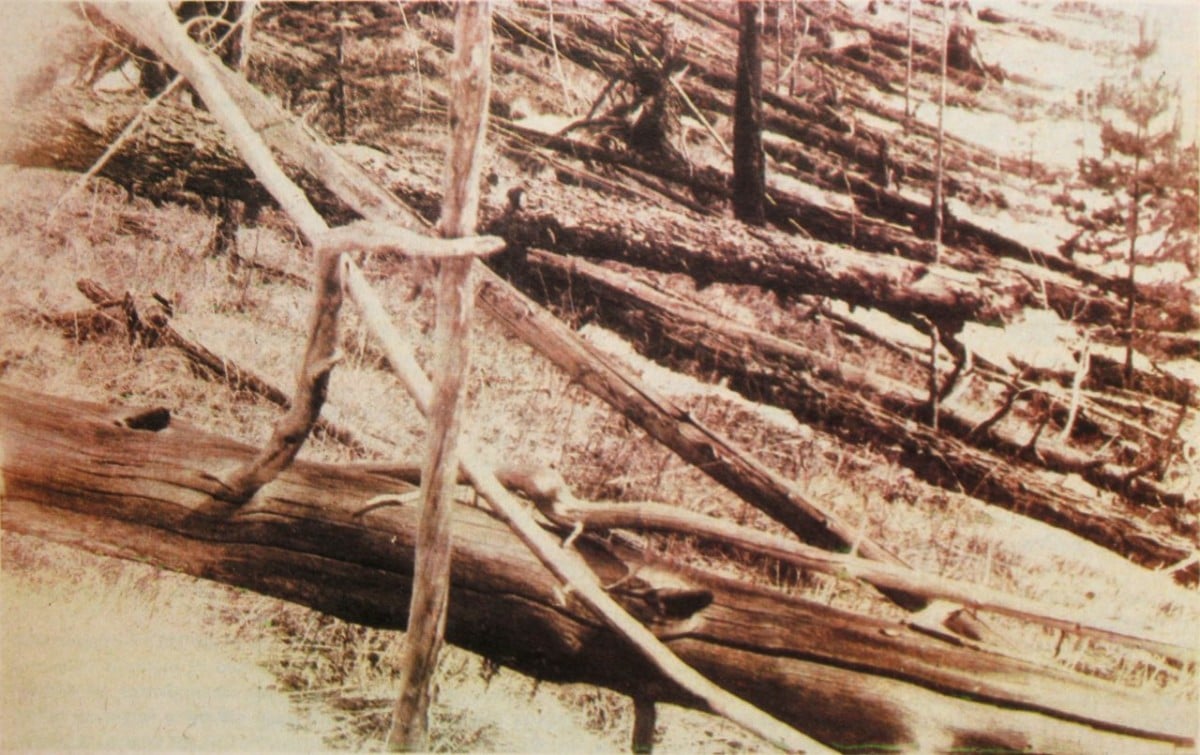
The fall of a space object triggered a seismic wave. It was registered by stations located not only on the territory of the Russian Empire, but also beyond its borders.
After the event, unusual atmospheric phenomena were observed in the skies over Russia and Europe for a long time. Their peak occurred on July 1, 1908. Within 5 hours after the meteorite explosion, a magnetic storm was observed on Earth.
The very first written messages about the fall of a meteorite
Already on June 30, 1908, the newspaper “Sibirskaya Zhizn” reported about this event. But the source contained fictitious information about the fall of the object. So, the newspaper wrote that a celestial body fell near the railway not far from the Filimonovo crossing. At the same time, the source embellished the information, writing that the meteorite crashed into the ground. The newspaper also came up with information that train passengers saw the top of a celestial body sticking out of the ground.
The event was described more plausibly in the issue of the Sibir newspaper, published on July 2, 1908. The author of the article, S. Kulesh, said that peasants living 200 miles from Kirensk observed a cylindrical luminous object in the sky. At the same time, the newspaper indicated the date of the phenomenon as June 17, 1908.
Initially, the Tunguska meteorite did not cause a stir. Interest in this phenomenon awoke in scientific circles only in the early 1920s. Then the first expeditions were organized to the site where the object fell.
Expedition led by L.A. Kulikom
The Soviet scientist became a pioneer in the study of this event. Kulik undertook 4 to 6 expeditions to the crash site in order to unravel the mystery of the Tunguska meteorite. The first expedition, which took place in 1927, discovered a vast area with fallen forest. During subsequent expeditions, the scientist resorted to aerial photography of the area, trying to find the crash site of the object. He and his group also interviewed eyewitnesses of the phenomenon.
The new expedition planned by Kulik in 1941 did not take place due to the outbreak of war. The scientist died in captivity in 1942. His work on studying the phenomenon was continued by geologist E.L. Krinov. In a book called “The Tunguska Meteorite,” the scientist summed up the results of L.A.’s many years of work. Kulika. Kulik himself was always convinced that the celestial body that fell in Siberia was a meteorite. He tried for a long time to find the crater. At one time, Kulik mistakenly believed that the thermokarst pits found by his expedition were meteorite craters.
Various hypotheses about this phenomenon
As before, not a single study can explain the features of the event that occurred in 1908 in the skies over Siberia. There is no generally accepted hypothesis that solves the mystery of the Tunguska meteorite.
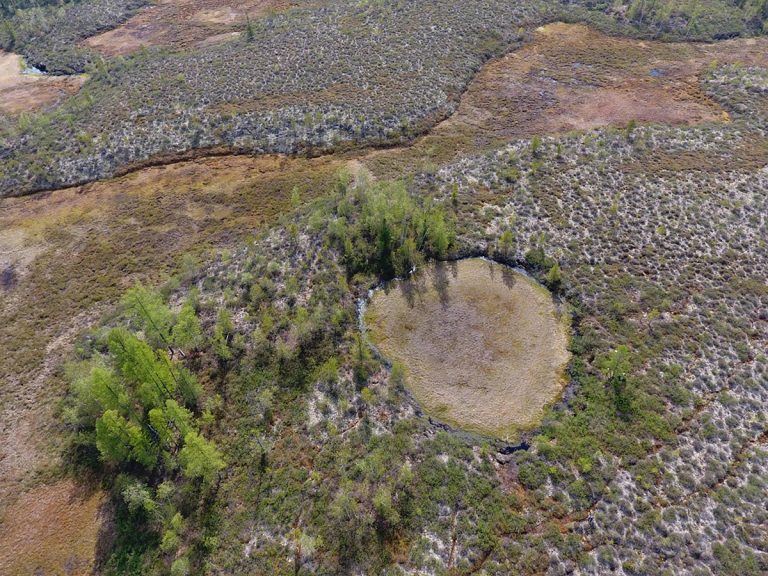
The most popular theories are:
- Meteorite Fall Contains speculation about the fall of a massive iron meteorite.
- The fall of a comet. Francis Whipple assumed that a comet’s nucleus would fall to Earth. Geochemist Vernadsky considered the fallen object to be a clot consisting of cosmic dust. Some scientists saw a connection between the Tunguska meteorite and Comet Encke.
- The fall of a stone meteorite. This theory was also based on the meteorite origin of the fallen body. But scientists believed that the Tunguska meteorite was a rocky asteroid that ricocheted from dense atmospheric layers.
- Fantastic. Writer Kazantsev suggested that the object was an alien ship that crashed.
- Volcanic. V. Epifanov, together with V. Kundt, suggested that the phenomenon is associated with the activity of a volcano. The result was an explosion of a methane cloud.
- Hypothesis about an earthquake caused by the fall of a fragment of a meteorite. This assumption was made by S.M. Kuznetsov and A.D. Belkin.
- Antimatter hypothesis US scientists Libby and Cowan suggested that the meteorite itself included antimatter. As a result of its interaction with earthly matter, any traces of the celestial body were completely destroyed.
- Collision of a small black hole with the Earth.
- Anthropogenic. Assumption of A.V. Savelyev and N.A. Savelyeva-Novoselova about a deliberatenuclear explosionin the sky over Siberia.
- Experiments conducted by Nikola Tesla. It is assumed that the phenomenon was the result of the scientist’s experiments with wireless transmission of electricity.
NASA experts in 2009 suggested that the Tunguska meteorite contained ice. The result of the object entering dense atmospheric layers was the release of ice microparticles and water molecules. This explains the appearance of noctilucent clouds in the skies over the UK and Russia in the first 24 hours after the celestial body fell to Earth. This version was confirmed back in 1999 by Russian researchers from the Russian Academy of Sciences.
Scientists have calculated the size and weight of the Tunguska meteorite. The celestial body was approximately 30 meters in diameter, and its weight reached 5 million tons.
Mention of a phenomenon in culture
The Tunguska meteorite often appeared in the works of science fiction writers in its time. The phenomenon was mentioned in such works as:
- “Astronauts” by Stanislaw Lem;
- “The Burning Island” by Alexander Kazantsev;
- “Monday begins on Saturday” by the Strugatsky brothers;
- “The Adventures of Alice” by Kir Bulychev;
- “The Secret City” by Vadim Panov.
The Tunguska meteorite is also mentioned in cinema. The fall of the object is associated with an alien invasion of Earth in one of the episodes of The X-Files. Also in the film Hellboy: Hero from Hell, one of the characters acquires an obelisk made of meteorite stone to perform the ritual.
The music industry has not ignored the phenomenon either. The Tunguska meteorite theme appears in the Metallica song “All Nightmare Long”. The song “Return to Tunguska” by British musician Alan Parsons is also dedicated to this phenomenon. The song “Berkut” by the rock band “Mango-Mango” sings about one of the versions of the fall of a celestial body to Earth.
Mentions of the Tunguska meteorite are present in the computer games “Crysis 2”, “Syberia II” and “Resistance”. The game “Secret Files: Tunguska” is dedicated to the theme of the phenomenon.
